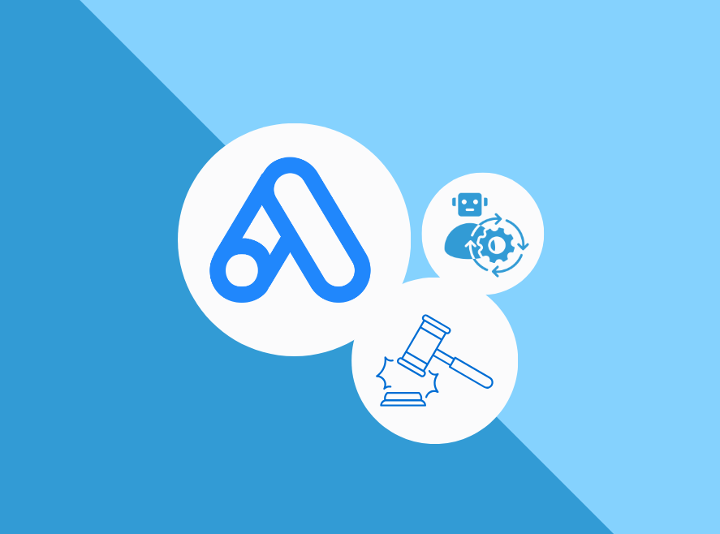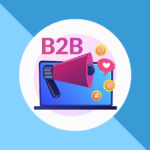In the ever-evolving digital marketing landscape, adaptability is key to success. Google Ads, the undisputed titan of online advertising, consistently changes, optimizes, and automates their tools to supposedly empower marketers to better achieve their campaign goals. One of the most impactful automated tools, Google Ads’ Automated Bidding, has disrupted the traditional manual bid management methods, introducing both advantages and challenges.
In this guide, we’ll dive into the world of Google Ads’ Automated Bidding, exploring its mechanics, and the inherent benefits and drawbacks of each strategy.
What is Automated Bidding?
Google Ads Automated Bidding is a feature within Google Ads that uses machine learning algorithms to automatically set and adjust your ad campaign’s bids in real-time. This technology aims to optimize your advertising budget by adjusting your bids for each ad auction, striving to maximize your desired advertising goals, whether it’s clicks, conversions, impressions, or other specific outcomes.
However, while automated bidding can save time and effort, it does take away some of your control from the ad account so it is crucial to know how each strategy works and when might not be the best time to utilize them.
Types of Automated Bidding Strategies in Google Ads
Enhanced PPC
Pros:
• Ability to maintain some control over bids
• Will use automation to improve conversion rate
Cautions:
• There is no % adjustment cap on increasing bids
• Could cause significant increase in CPC and CPA
Maximize Clicks
Maximize Clicks sets your bids to help get as many clicks as possible within your budget.
Pros:
• Will drive as many clicks as possible
• Ability to set a max CPC
• Effective for campaigns that are limited by budget
Cautions:
• No control over the quality of traffic
• Potentially less meaningful results
Maximize Conversions
Maximize Conversions will aim to spend your budget to get as many conversions as possible.
Pros:
• Should drive as many conversions as possible within your daily budget
• Ability to set a max CPA
Cautions:
• Must have substantial budget to utilize effectively (can’t be limited by budget)
• Can significantly increase CPC
• You must have accurate conversion tracking implemented
• You should be generating at least 15-30 conversions per month before implementing
• There is no consideration for ROAS
Maximize Conversions with Target CPA
Maximize Conversions with Target CPA will try to get as many conversions as possible at the target cost-per-action (CPA) that you set.
Pros:
• Good for scaling campaigns
• Ability to control your cost per lead
Cautions:
• Proper conversion tracking must be setup
• Ideally should have 30-50 conversions within the past 30 days
• Must set accurate limits or you could severely limit your campaign
Maximize Conversion Value
Maximize Conversion Value will try to get the highest conversion value possible.
Pros:
• Will optimize for conversions that generate the highest return
• Increase value of conversions
• Generate more value without exceeding budgets
Cautions:
• Must use assigned values to conversions
• Must have conversion tracking set up
• Can significantly increase CPCs
• No consideration for ROAS
Target ROAS
Target ROAS sets bids to help generate as much conversion value as possible at the target return on ad spend (ROAS) you set.
Pros:
• Can set min and max limits
• Good for scaling campaigns
Cautions:
• Proper conversion tracking must be setup
• Ideally should have 30-50 conversions within the past 30 days
• Must set accurate limits or you could severely limit your campaign
Target Impression Share
Target Impression Share sets bids with the goal of showing your ad on the absolute top of the page, on the top of the page, or anywhere on the page of Google search results.
Pros:
• Can work well for branded search campaigns
• Helps mobile-oriented campaigns secure ideal placements
• The only automated strategy that helps to secure the top spots on Google’s SERP
• Aligns well with brand awareness and market share objectives
Cautions:
• Can increase bids to an unprofitable level
• Rarely will see 100% coverage
• No focus on clicks or leads
Viewable CPM
Viewable CPM (cost per mille) lets you bid on the actual value of your ad appearing in a viewable position on a given placement. Keep in mind that using a higher vCPM bid than your CPM bid is usually more effective for winning these more valuable types of impressions.
Pros:
• Expand your brand’s coverage
• Reach a large number of users
Cautions:
• Can cause a high frequency count per user
• Can show up on low quality sites
• Can waste money on users just skipping your ads
Cost per View
Cost per View allows you to set a campaign-level bid limit which implies the maximum you’ll pay for video views or interactions (such as clicks on call-to-action overlays, cards and companion banners). A view is counted when someone watches 30 seconds of your video ad (or the duration if it’s shorter than 30 seconds) or interacts with the ad, whichever comes first.
Pros:
• Only charged when user watches 30 seconds of video or if the viewer clicks
• Can increase bid for popular YouTube videos
Cautions:
• Not focused on lead generation
• Need very engaging content for a user to watch 30 seconds
Is Automated Bidding Right for You?
Google Ads Automated Bidding is a valuable tool for advertisers looking to make their campaigns more efficient and goal-oriented. However, it’s essential to carefully select the right bidding strategy and monitor your campaigns to ensure that automation aligns with your specific business objectives.
Knowing how these automated bid strategies work, setting up proper testing plans and ensuring you have enough useful data are just a few steps you need to take before jumping into an automated bidding strategy. It is also crucial to note that alternating through different bid strategies can not only cause your account to go through learning phases, but it can also cause drastic changes on your account’s performance as well.
Always keep in mind that Google Ads is fundamentally designed to benefit Google’s revenue, and your advertising budget will be spent, regardless of whether it aligns with your business’s profitability. Our team specializes in the strategic utilization of Google Ads bidding strategies, ensuring they work to your business’s advantage.








